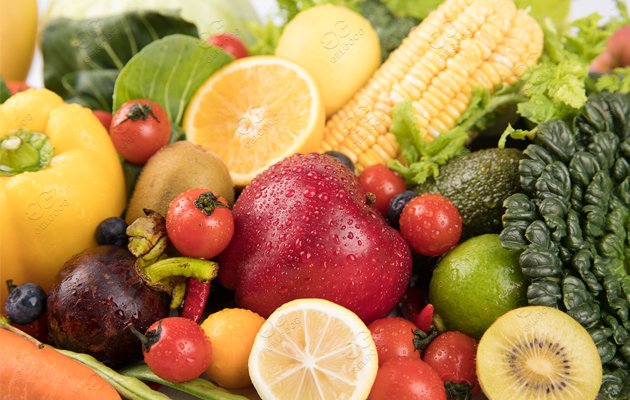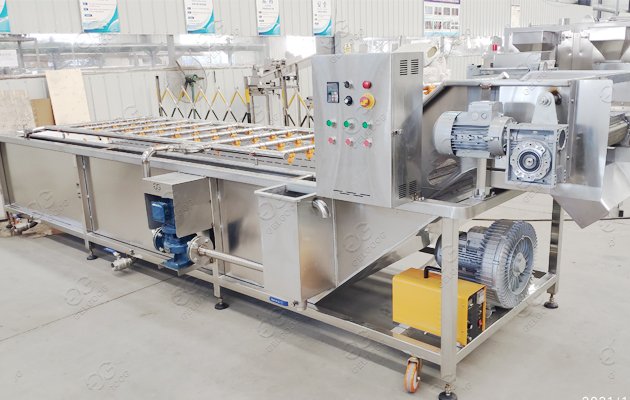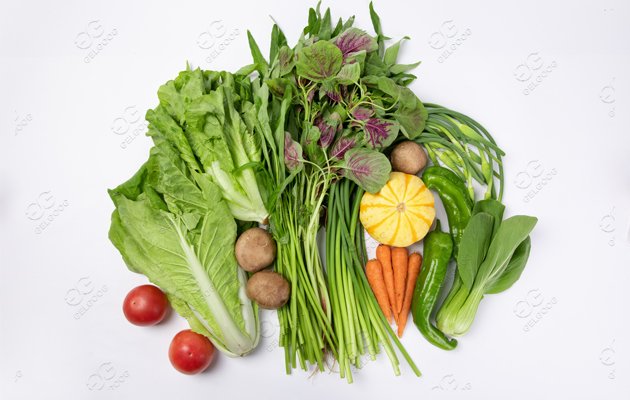9 Ways To Eliminate Pesticide Residues In Vegetables And Fruits
Time:2021-12-14By:admin
On December 13, 2021, Mostafa Daraeinejad, head of the Iran Fruit and Vegetable Association, stated that countries have banned the import of Iranian fruits and vegetables due to high levels of mold or pesticide residues. If the Ministry of Agriculture does not take immediate action to raise standards, Iran will face the threat of losing its agricultural market.
.

In order for your fruits to meet export standards, you need to wash vegetables and fruits to remove residual pesticides and molds. The following will show you 9 ways to eliminate pesticide residues in vegetables and fruits.
The nine methods of sterilization and removal of pesticides mainly include: soaking and washing method, alkaline water soaking method, blanching method, rice washing water soaking method, salt water method, clear water baking soda flour removal method ect.
The nine methods of sterilization and removal of pesticides mainly include: soaking and washing method, alkaline water soaking method, blanching method, rice washing water soaking method, salt water method, clear water baking soda flour removal method ect.
1. Soaking and washing method.
Water washing is the basic method to remove other dirt on vegetables and fruits and to remove pesticides. Generally, first rinse off the surface dirt with clean water, and then soak in clean water for 20-30 minutes. The use of fruit and vegetable cleaning agent can increase the dissolution of pesticides, so a small amount of fruit and vegetable cleaning agent can be added when soaking. After soaking, rinse with running water two or three times. Suitable for all kinds of leafy vegetables, such as spinach, golden needles, leeks, lettuce, coriander, Chinese cabbage, etc.
Our fruit and vegetable washing machine can customize the required sterilization function according to the needs of customers. It also called Fruit and Vegetable Sanitizing Machine.

2. Alkaline water immersion cleaning method.
Soaking in alkaline water is an effective measure to remove pesticide pollution. Rinse the dirt on the surface first, soak it in sodium bicarbonate water (usually add 5-10 grams of baking soda to 500ml of water) for about 15 minutes, and then rinse with clean water. Applicable fruits and vegetables: all kinds of vegetables and fruits.
3. Boiling water blanching cleaning method.
The pesticides on some vegetables can be invalidated by heating. Put the vegetables in boiling water and cook for 1-3 minutes, and then clean them. The pesticides on the vegetables will also lose their effect. Such as spinach, lettuce, coriander, cabbage, celery, pepper, zucchini and other vegetables.
4. Soaking and cleaning the rice in water.
Pesticides remaining on vegetables will slowly decompose and become invalid after encountering acidic rice washing water, thereby removing part of the pesticides remaining on vegetables.
5. Salt water cleaning method.
Washing vegetables with 1%-3% light salt water can not only remove part of the pesticides, but also remove all kinds of insects hiding in the roots or the lines on the back of the leaves. Such as Chinese cabbage, cabbage, cabbage and other vegetables, you can break these vegetables into one leaf and one leaf by hand before eating, and then soak them in salt water for a period of time. When soaking vegetables, it is best to make all sides of the vegetables Full exposure to salt water. The pesticide residues on vegetables will slowly lose their effect after being soaked in water. Then, wash the vegetables several times with clean water until no multicolored oils can be seen on the surface of the water.
6. Removal of water and baking soda flour.
For fruits such as grapes, cherries, cherries, etc., first rinse off the dirt on the surface of the fruit, add some flour to the sodium bicarbonate water (generally add 5-10 grams of sodium bicarbonate to 500ml of water) to increase the viscosity of the water. Soak for about 15 minutes, and then rinse with water for 3-5 times, which is very effective in removing residual pesticides, microorganisms, pollutants, and impurities.
7. Peeling method.
Vegetables and fruits have a relatively large amount of pesticides on the surface, so peeling is a better, simple and practical way to remove residual pesticides. In this way, the pesticides and parasite eggs remaining on the fruits will be completely removed. Applicable fruits and vegetables: apples, pears, kiwi, cucumbers, loofah, winter melon, pumpkin, zucchini, eggplant, carrots, radishes, potatoes, etc.
8. Storage method.
During the storage of vegetables, the oxygen in the air and the enzymes in the vegetables can react with the residual pesticides to oxidatively degrade the pesticides, which can reduce the amount of pesticide residues and reduce their toxicity. Therefore, the fruits and vegetables that are easy to preserve can be stored for a certain period of time to reduce the amount of pesticide residues. It is suitable for non-perishable types such as apples, kiwis, and wax gourds.
9. Drying method.
The spectral effect will decompose and destroy part of the pesticide residues in vegetables. Vegetables exposed to sunlight have fewer pesticide residues. For vegetables that are convenient for storage, it is best to leave them for a few days. The oxygen in the air and the color enzymes in the vegetables have a certain effect on the decomposition of residual pesticides. Suitable for cabbage, cabbage, cabbage, etc.
I hope that nine ways can help you better understand the methods of sterilizing fruits and vegetables. Help more companies and enterprises to meet the export standards of fruits and vegetables and create more profits. If you have any questions, please feel free to contact us. Email to wendy@machinehall.com or phone/whatsapp:+8618539931566












 E_mail
E_mail contact
contact Whatsapp
Whatsapp TOP
TOP